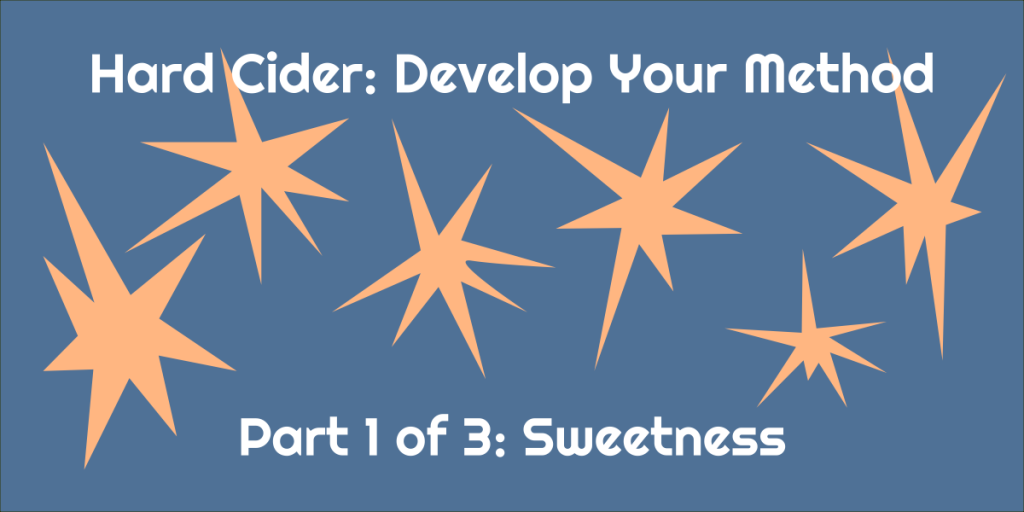Have you ever heard of a mistelle? I hadn’t until I was doing some research on pommeau, which is a drink made by blending calvados and apple juice. Calvados is apple brandy, also called applejack in the United States. It is basically cider that has been distilled into a spirit or liquor. If you look up the definition of a mistelle, you will probably find a couple versions. The definition I use is that a cider mistelle is a beverage created by blending juice or hard cider with a spirit. Spirits are alcoholic beverages that are created by distilling a fermented beverage. Wine and cider that is distilled turn into a brandy or calvados if you are in France. The distilling process concentrates the alcohol and other compounds. When done properly, it also removes some harmful compounds like methanol that can be found at negligible levels in fermented beverages like cider and wine. If done incorrectly, it can simply concentrate these harmful compounds. This is why distillation is often highly regulated and illegal in many countries (America) without a license. The ability to get something wrong and concentrate compounds that are poisonous is high. This is why I let the professionals create the spirits used in my mistelle recipes (search Ruby Reaper and Flora Dora).
Mistelles offer the home craft cider maker two key paths to create interesting beverage options: the beginning and the end of the cider making process. Let’s look at the end of the cider making process first. Cocktails, like a margarita or Bloody Mary, are fresh drinks made by mixing spirits, fruit and vegetable juices, and spices. These are mixed and consumed “fresh” or soon after mixing. Mistelles are drinks made with spirits, fruit and vegetable juices, and spices but are aged together. Aging or maturation plays an important role in the development of the beverage. It is where flavors and aromas evolve. Maillard reactions can occur and other compounds can form through reductive and oxidative processes.
The addition of spirits increases the alcohol level. While hard ciders are often 5-7% ABV, mistelles should be more like wines, 12-22% ABV. This will make the mistelle less susceptible to yeast and bacteria changes but still allow the reductive and oxidative reactions that happen during aging. It’s also important to note that most mistelles have residual sugar. This sugar is a key element in developing aroma during maturation. Maturation is where classic mistelles like Madeira and Port wine form their unique flavor profiles. Home hard cider makers can tap into the maturation process to develop unique flavors. This is because the nature of mistelles is to encourage adjuncts. Vermouth is an example of a mistelle made with spices and pommeau is an example of one made with fresh juice. Cider mistelles allow you the flexibility of creating unique flavor profiles by selecting different spirits, juices, and spices. For me, I see cider mistelles as a challenge to create classic cocktails like my Flora Dora recipe as well as unique flavor combinations like Ruby Reaper. Aging is one of the key elements to fuse those flavors together.
The second path mistelles open to home cider makers is the ability to create naturally sweet ciders. This is because adding spirits or fortifying cider during the fermentation process can arrest that fermentation. This is because you are increasing the alcohol to a level that the yeast either can’t survive or shuts down. You can remove yeast through filtration or kill it with pasteurization but, the two traditional methods to stop the fermentation process and create naturally sweet hard cider are nutrient deprivation and fortification. Keeving is the process used for many years in France to deprive yeast of nutrients to stop fermentation and have residual sugar. Creating a mistelle through fortification is the other.
The yeast you select becomes much more important. Most wine yeasts are Saccharomyces cerevisiae species and they will often ferment up to alcohol levels of 16-20% ABV. Using natural yeast, which is also recommended for keeving, will usually make your cider stop fermenting at lower alcohol levels. This will leave you with a sweet hard cider. Most natural yeasts found on the fruit are non-Saccharomyces species and have lower tolerance for alcohol. Using non-Saccharomyces yeast and fortifying your fermenting cider with spirits to create a cider mistelle can ensure you create a naturally sweet cider. This is why I put cider mistelles in my dessert cider category.
Isolating and propagating non-Saccharomyces species, or what I often call cider yeast, can be an import part of the cider mistelle process. It allows you the opportunity to create a cider with unique aromas while potentially keeping your %ABV lower. It also starts to make sweetness a real tool available to the home craft cider maker. You can use it to balance acidic apple varieties common in culinary and modern apple. Overall, the mistelle process of fortifying cider provides a excellent path for enhancing flavors and creating balanced and unique cider options. Similar to how how ice cider has expanded the cider category, so too can cider mistelles continue this expansion.
Did you enjoy these tips on making hard cider? Check out my book to learn more ideas and information on making and enjoying hard cider. It will help you develop a process that matches your desire and equipment. It will also show you how to pair cider with food to maximize your experience. You can find it as an eBook and a 7×10 paperback on Amazon or a 7×10 paperback on Barnes & Noble. Click on these Links to check them out.



